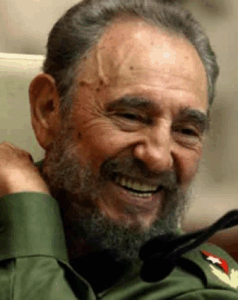 Guantánamo, Cuba.- The legacy of the historic leader of the Cuban Revolution, Fidel Castro, is immortalized here today through the testimonies of those who experienced unique moments during his visits to this eastern province.
Guantánamo, Cuba.- The legacy of the historic leader of the Cuban Revolution, Fidel Castro, is immortalized here today through the testimonies of those who experienced unique moments during his visits to this eastern province.
On the occasion of the commemoration of the distinguished guerrilla’s 99th birthday on August 13, the people of Guantánamo relive his transformative imprint on a geography marked by social and economic achievements that bear his seal.
The accounts of his visits are not limited to the records of historians, audiovisual producers, and political and government leaders. They also reside in the collective memory of a people grateful for Fidel Castro’s exceptional leadership.
From his first visit on February 3, 1959, the Commander in Chief valued the attributes of a province whose history, culture, and landscape make it—as he himself expressed in 1985—“unique and heroic.”
In that first meeting, the revolutionary leader identified with the humble, the students, the unprotected workers, and all those who needed the support of the Revolution, especially in a region historically relegated by governments serving the US elites.
During his multiple visits to Guantánamo, he promoted the social and economic development of all its municipalities. Under his leadership, daycare centers, schools, medical offices, hospitals, agricultural and citrus groves were built, among thousands of projects aimed at the well-being of the population.
Whether in the remote areas of Maisí, Baracoa, Yateras, Niceto Pérez, El Salvador, Manuel Tames, or on the border with the illegal US naval base in Caimanera, the charismatic Cuban president forged a relationship. An epic journey with the people of Guantanamo, whom he praised for defending the “first anti-imperialist trench in the Americas.”
His visits are charged with symbolism. Every April 11th, the inhabitants of this region remember the landing at Playitas de Cajobabo of National Hero José Martí, along with a group of patriots, to launch the war for Cuban independence. Fidel also honored this emblematic site on several occasions.
Among the most memorable are his 1976 visit with documentary filmmaker Santiago Álvarez, and the 1995 visit, the centennial of José Martí’s landing. During the first visit, he had a moving encounter with Salustiano Leyva, the child who met the Cuban Apostle. That conversation was immortalized in the documentary My Brother Fidel, directed by Álvarez.
In 1995, Fidel Castro returned to Playitas with the same emotion, recognizing the place’s profound patriotic significance. There he recalled the “great joy” Martí felt upon returning to Cuba to fight for its independence, a sentiment that also seemed to be reflected in the revolutionary leader.